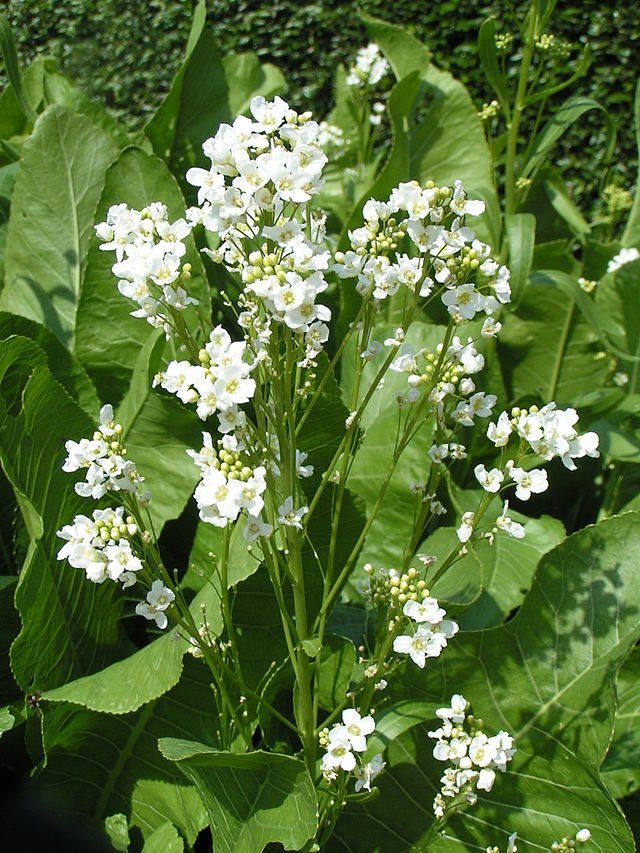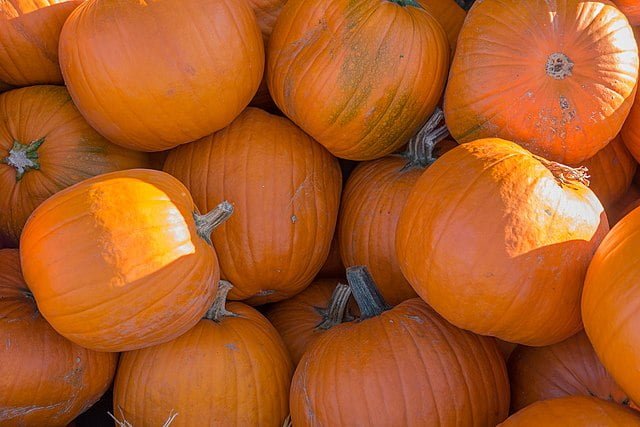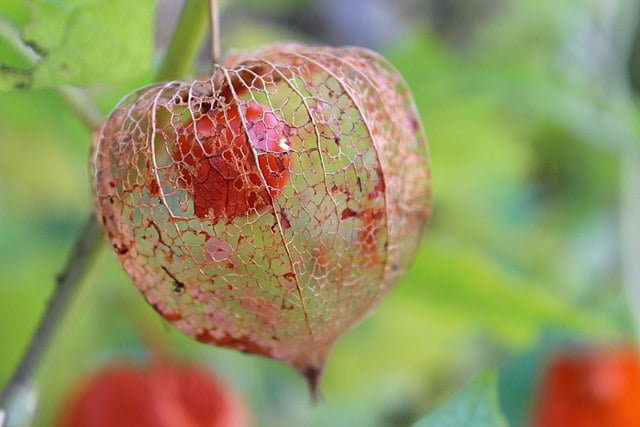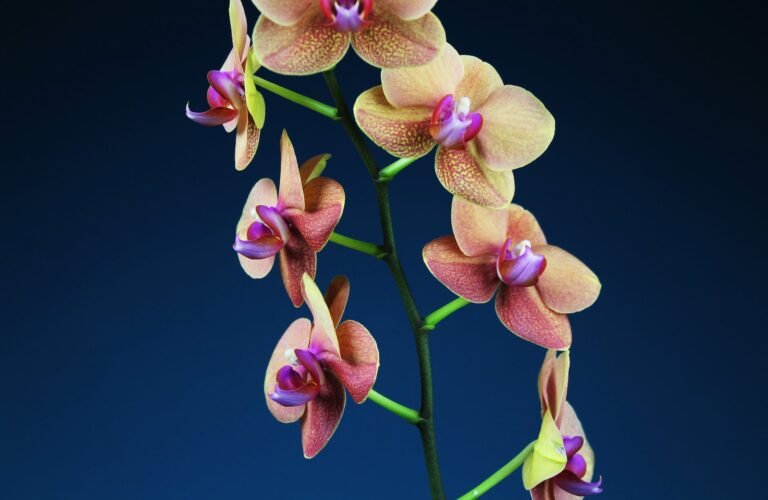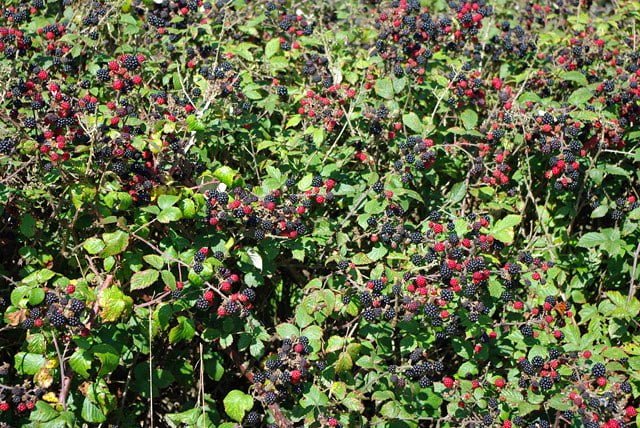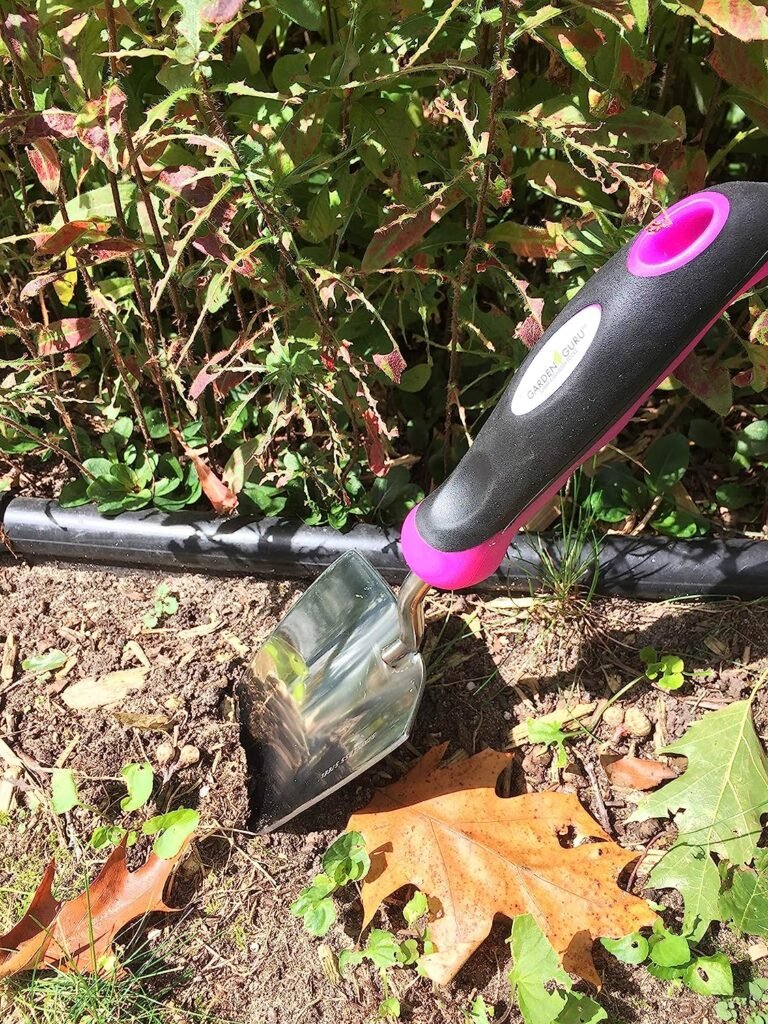Growing Horseradish: A Guide to Cultivating Spicy and Flavourful Roots
Horseradish is a pungent and spicy root vegetable that adds a unique kick to various culinary dishes. Growing your own horseradish allows you to enjoy the freshest and most flavourful roots right from your garden. If you’re interested in cultivating this versatile and zesty plant, this guide will provide you with simple steps to successfully grow horseradish.
How to Grow Horseradish
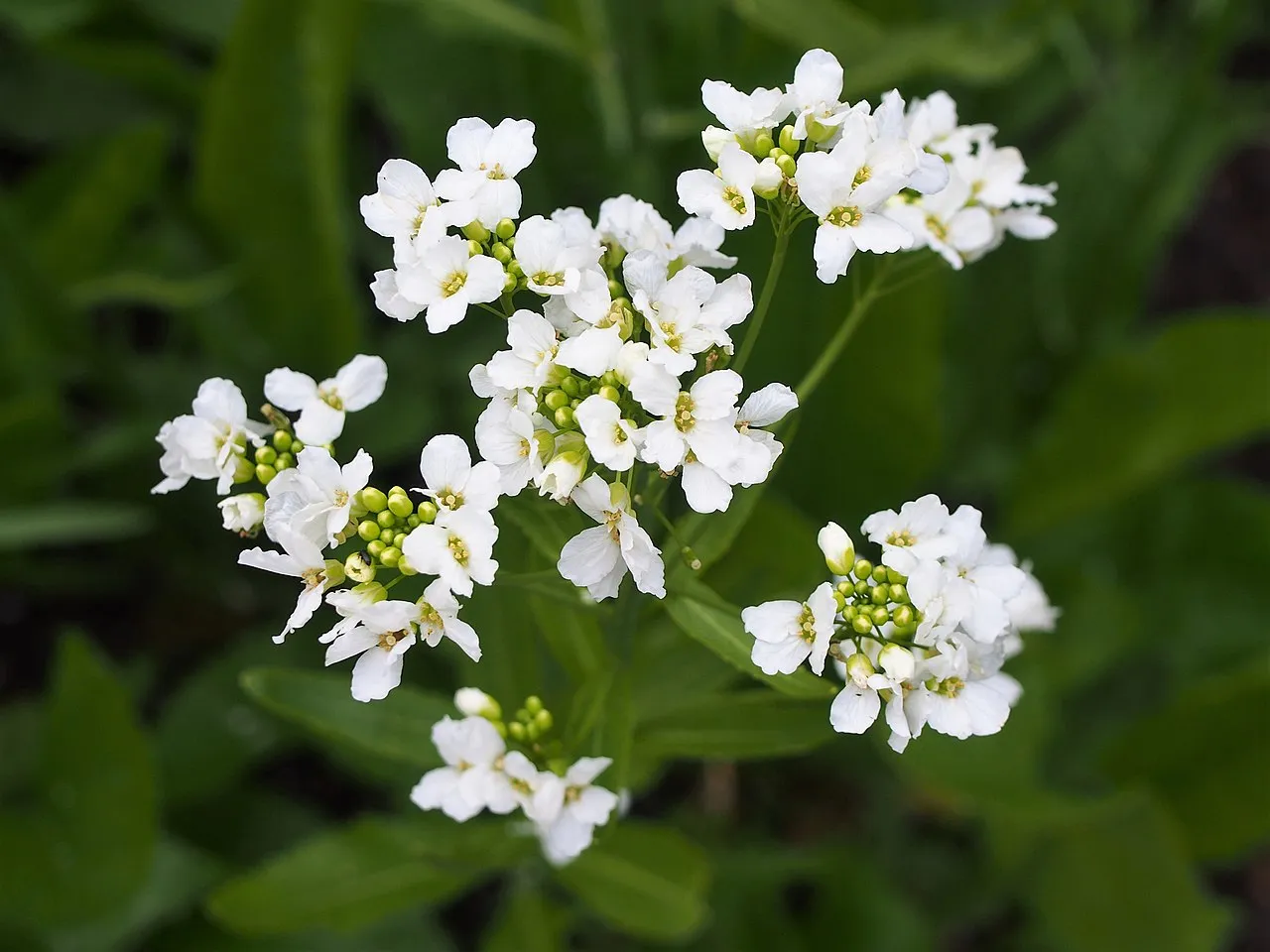
Selecting Horseradish Roots
Horseradish is typically grown from root cuttings, known as crowns. When selecting horseradish crowns, choose healthy roots that are plump and firm. Look for crowns that have several bud eyes, as these will give rise to new shoots. You can find horseradish crowns at nurseries, garden centers, or from online suppliers.
Choosing the Planting Location
Horseradish thrives in full sun but can tolerate partial shade. Select a spot in your garden that receives at least 6 hours of direct sunlight daily. Horseradish prefers well-draining soil that is rich in organic matter. Prepare the planting area by loosening the soil to a depth of about 12 inches and removing any weeds or debris.
Planting Horseradish Crowns
Plant horseradish crowns in early spring or fall, when the soil is cool. Dig a hole that is wide and deep enough to accommodate the crown without bending or crowding the roots. Place the crown in the hole horizontally, with the bud eyes facing upward. Backfill the hole with soil, gently firming it around the crown. Leave the crown slightly exposed above the soil surface. Space the crowns about 18-24 inches apart to allow for proper growth and development.
Watering and Care
Horseradish requires consistent moisture to grow properly. Water the plants regularly to keep the soil evenly moist but not waterlogged. Aim for about 1 inch of water per week, adjusting based on weather conditions. Mulch around the plants with organic material, such as straw or wood chips, to help retain moisture, suppress weeds, and regulate soil temperature. Remove any weeds that compete with the horseradish for nutrients and water.
Fertilizing
Horseradish is a relatively low-maintenance plant and doesn’t require heavy fertilization. However, incorporating compost or well-rotted manure into the soil before planting can help improve soil fertility. Avoid using excessive nitrogen-rich fertilizers, as they may result in lush foliage growth at the expense of root development.
Harvesting Horseradish
Horseradish roots are typically ready for harvest after the first frost in fall or during early spring. The longer the roots remain in the ground, the more pungent they become. To harvest horseradish, carefully dig around the root clump and lift it from the ground. Trim off the foliage, leaving about an inch of the top intact. Wash the roots thoroughly to remove any soil, and peel the skin using a vegetable peeler. Grate or grind the roots to release their signature pungent aroma and flavour.
Pests and Disease Management in Horseradish
Horseradish is known for its hardiness and resistance to many pests and diseases. However, like all plants, it can occasionally encounter problems. Here are some of the most common issues and how to address them:
Common Pests
Cabbage Root Maggots: These pests can attack the roots of horseradish, inhibiting growth. Prevention is key; apply row covers early in the season to prevent flies from laying eggs near the plants. Practice crop rotation and keep the garden area clean of debris.
Aphids
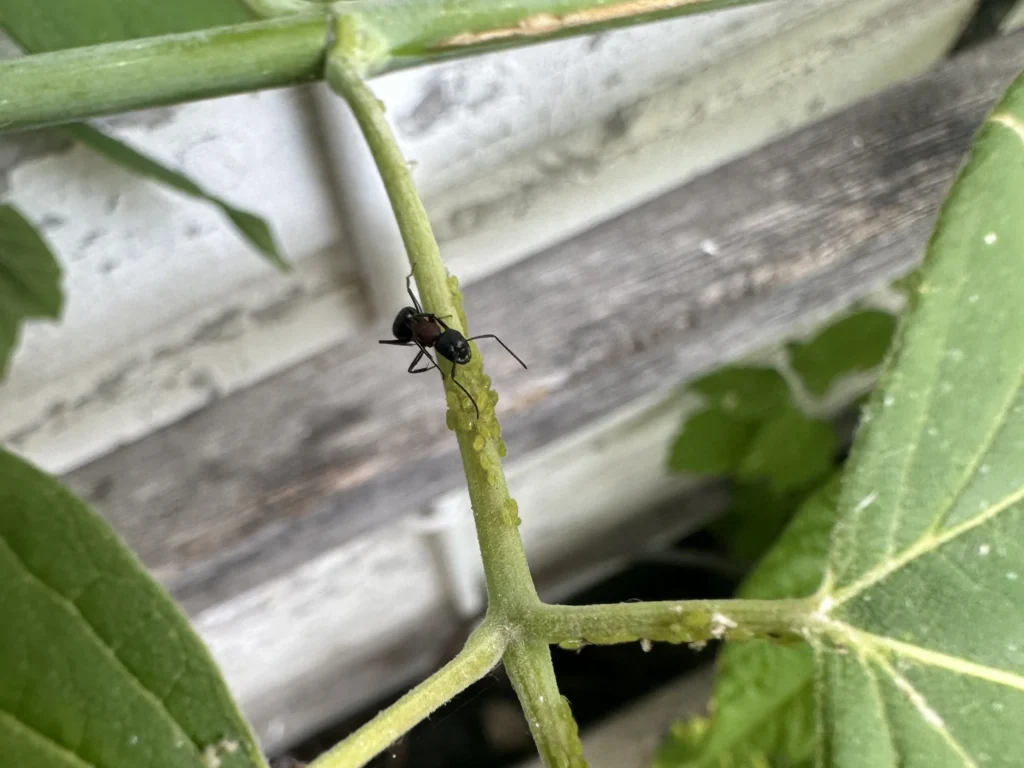
Aphids can suck sap from the leaves, weakening the plant. They can also spread diseases. Control aphids by spraying strong jets of water to knock them off plants, using insecticidal soaps, or encouraging natural predators like ladybugs.
Common Diseases
White Rust: This fungal disease appears as white, puffy spots on the undersides of leaves and can lead to leaf drop and reduced vigor. Improve air circulation around plants, and practice good sanitation by removing affected leaves. Use fungicides only as a last resort and according to the label’s instructions.
Root Rot: Overly wet conditions can lead to fungal diseases such as root rot, which causes the roots to become mushy and discolored. Ensure good drainage in your planting beds, and water the plants at their base to keep foliage dry. Infected plants should be removed and destroyed.
Prevention Tips
- Good Cultural Practices: Healthy plants are less susceptible to pests and diseases. Ensure your horseradish plants have well-draining soil, adequate spacing, and the right amount of water and nutrients.
- Crop Rotation: Avoid planting horseradish or other Brassicaceae family members (such as cabbage, kale, or mustard) in the same spot every year to reduce the risk of soil-borne diseases.
- Sanitation: Keep the garden area clean of plant debris and weeds, which can harbor pests and diseases. Dispose of infected plants promptly to prevent the spread of disease.
Treatment Strategies
- Natural and Organic Controls: Whenever possible, opt for natural predators and organic treatments to manage pests and diseases. Beneficial insects, such as ladybugs for aphid control, can be effective allies in your garden.
- Chemical Controls: Use chemical pesticides and fungicides as a last resort and always according to the product label’s instructions. Consider the impact on beneficial insects and the environment before application.
By monitoring your horseradish plants regularly for signs of pests and diseases, you can take early action to resolve issues. Implementing these preventive and treatment strategies will help ensure that your horseradish plants remain healthy and productive throughout the growing season.
Storing and Enjoying
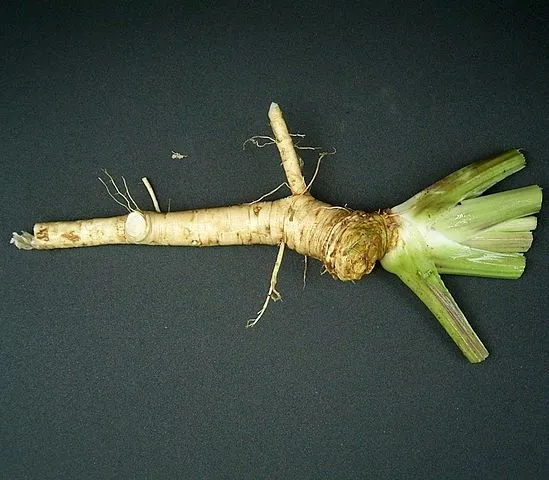
Freshly harvested horseradish can be stored in the refrigerator for several weeks. For longer-term storage, you can freeze the grated or processed horseradish in airtight containers. Horseradish is commonly used as a condiment, adding a zesty and spicy kick to sauces, dips, and marinades. It pairs well with roast beef, fish, or can be used to create a flavourful homemade horseradish sauce.
Horseradish FAQ
What is horseradish?
Horseradish (Armoracia rusticana) is a perennial plant in the Brassicaceae family, known for its pungent root which is commonly used as a spice or condiment.
When is the best time to plant horseradish?
The best time to plant horseradish is in the early spring, as soon as the soil can be worked, or in the fall before the ground freezes.
How should I prepare the soil for planting horseradish?
Horseradish thrives in well-drained, fertile soil with a pH between 6.0 and 7.5. Prepare your planting site by incorporating plenty of organic matter and ensuring good drainage.
How deep and far apart should I plant horseradish?
Plant horseradish root cuttings (sets) about 2 inches deep and 18 to 24 inches apart, in rows spaced 30 inches apart. Position the top of each cutting at a 45-degree angle, with the top pointing downward.
How much water does horseradish need?
Water horseradish plants regularly to keep the soil consistently moist but not waterlogged. They typically require about 1 inch of water per week, whether from rainfall or irrigation.
When and how do I harvest horseradish?
Horseradish roots are typically harvested in the fall, after the first frost, or in early spring of the following year. Use a digging fork to loosen the soil around the plant, and gently lift the root out of the ground.
Can horseradish be grown in containers?
Yes, horseradish can be grown in containers, but choose a deep pot to accommodate its long taproot and ensure it has adequate drainage holes.
What are common pests or diseases that affect horseradish?
Horseradish is relatively disease and pest-resistant. However, it can occasionally suffer from fungal diseases like white rust or root rot if overwatered or planted in poorly drained soil.
How should I store harvested horseradish?
Fresh horseradish root can be stored in the refrigerator for up to a month. For longer storage, horseradish can be frozen, dried, or preserved in vinegar.
Can the leaves of horseradish be eaten?
Yes, young horseradish leaves can be eaten and have a slightly bitter, peppery flavour, suitable for salads or cooked greens.
Additional Resources for Horseradish
- “The Joy of Horseradish” by Dave Owens: This book covers everything from growing and harvesting to preparing and using horseradish, offering a comprehensive guide for enthusiasts.
- Horseradish Information Council: Provides a wealth of information on the history, cultivation, and culinary uses of horseradish, along with recipes and tips for preparing horseradish products at home.Horseradish Information Council Website
- Missouri Botanical Garden – Plant Finder: Offers detailed botanical information on horseradish, including its growth habits, care requirements, and environmental preferences.Missouri Botanical Garden – Horseradish
Final Thoughts
Growing horseradish is a rewarding endeavour that allows you to enjoy the intense and distinctive flavour of this versatile root vegetable. By following these simple steps and providing the right growing conditions, you can cultivate your own horseradish and elevate the taste of your culinary creations.

